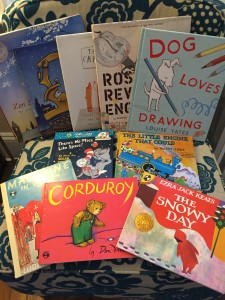 Several times a week, someone on one of my social media platforms posts a desperate plea asking how to find babysitters. Now, I’m certainly no expert — it seems we often exhaust our list of tried-and-true sitters — but I do know a thing or two about how to add to that list! We have our eyes and ears open all the time, and we are never shy to ask for a number. Here are some of our favorite (free) resources for finding babysitters — I hope this can help those of you who are desperate for a date night!
Several times a week, someone on one of my social media platforms posts a desperate plea asking how to find babysitters. Now, I’m certainly no expert — it seems we often exhaust our list of tried-and-true sitters — but I do know a thing or two about how to add to that list! We have our eyes and ears open all the time, and we are never shy to ask for a number. Here are some of our favorite (free) resources for finding babysitters — I hope this can help those of you who are desperate for a date night!
University job boards
There are dozens of colleges and universities in the Boston area, and that means there are thousands of students nearby — many of whom not only want to make a little extra money but have a good amount of time available. The Tufts student job board is a favorite among my friends, and many other local schools have similar boards. Put your needs out there and see how many responses come back to you!
Friends
Many people get very protective of their babysitters. I get it — a good sitter is hard to come by, and you want them available when you need them! But I see it more as a “I scratch your back, you scratch mine” situation. I’m happy to share my sitters — and happy to hear who my friends use. It’s a great way to grow the list. Sharing is caring!
Babysitting share
Desperately need a sitter but coming up short? Ask a friend to watch your kids — in exchange for watching hers another night. She can come to your house, or you can even bring your kids there so the kids can play while you get a little time away.
Facebook groups
There is no shortage of local Facebook groups for parents today! These groups are wonderful for connecting with parents in your area, and who better to ask about babysitters than those who live nearby? Some Facebook groups specifically narrow in on the topic of childcare, which means you have parents and babysitters and nannies all in one place!
Just ask
True story — we found our most amazing sitter while she was working at a restaurant we frequented. (She is seriously the best — she took time off from her summer job when I had my daughter to care for my first child without us even asking.) She was a hostess at the restaurant who adored my son and always came to our table to visit. After a few interactions, we took a gamble and asked for her number. More than three years later, we don’t know what we would do without her!
Restaurants, daycares, and kid-friendly classes are great places to meet sitters. These are people who are around children regularly. This gives you a very good idea how they handle stress, how they balance tasks, and how they are around kids.
It’s hard to find a babysitter you trust — I get that! We have so many worries about leaving our kids with someone we don’t know intimately. Having a tried-and-true list of people you feel comfortable with watching your kids makes life a lot better. Plus, it makes finding that last-minute date-night sitter a whole lot easier!



 Are you thinking about having a home birth? I had two magnificent planned water births at home that I cherish so very much. Here are some things I learned during my home birth journey.
Are you thinking about having a home birth? I had two magnificent planned water births at home that I cherish so very much. Here are some things I learned during my home birth journey. Many parents are terrified of dining out with small children. I was certainly scared when we brought our newborn son out to lunch with us for the first time. But I am here to tell you that eating out with children in tow can be enjoyable! It just takes a bit of preparedness to do so. Here are some tips — “the 5 Ps” — that have worked for our family.
Many parents are terrified of dining out with small children. I was certainly scared when we brought our newborn son out to lunch with us for the first time. But I am here to tell you that eating out with children in tow can be enjoyable! It just takes a bit of preparedness to do so. Here are some tips — “the 5 Ps” — that have worked for our family. I had waited so long to have my first child and was loving every moment of being a mom. But my maternity leave was coming to an end. It was time for me to return to work — to the job I loved and was good at. But that meant having to leave my son behind. To become a working mom.
I had waited so long to have my first child and was loving every moment of being a mom. But my maternity leave was coming to an end. It was time for me to return to work — to the job I loved and was good at. But that meant having to leave my son behind. To become a working mom. “She’s such a chunker!”
“She’s such a chunker!” I knew before she was even born that Olivia was going to be a stubborn, feisty one. When she refused to turn from a breech position to head down, no matter what I did (and I tried EVERYTHING), I knew this was a girl with a mind of her own. Boy, was I right! Olivia won’t do things until she is good and ready. No matter how much we push her, she won’t do anything until the day she decides she wants to.
I knew before she was even born that Olivia was going to be a stubborn, feisty one. When she refused to turn from a breech position to head down, no matter what I did (and I tried EVERYTHING), I knew this was a girl with a mind of her own. Boy, was I right! Olivia won’t do things until she is good and ready. No matter how much we push her, she won’t do anything until the day she decides she wants to. We have been reading with my daughter, now 3, since she was born. Her small room has bins packed with favorite books that she can reach, sort, and choose herself. Stories, often as many as six or seven, are a central part of her bedtime and nap time ritual.
We have been reading with my daughter, now 3, since she was born. Her small room has bins packed with favorite books that she can reach, sort, and choose herself. Stories, often as many as six or seven, are a central part of her bedtime and nap time ritual.
 Reading to our children is a natural inclination for most parents. Stories have been passed down throughout humanity, first through oral tradition and then written text. We share this history with our children each time we pull them into our laps and open a book. We share language, imagery, experience, and emotion. Children love to hear their adults’ voices engaged in a story. They may develop favorites, asking you to read “Goodnight Moon” again, and again, and again. We know it’s important to read to our children, and the act of reading is fairly simple. But there are a few things you can do to help your children get the most out of your story time experience — and make it more fun for you, too!
Reading to our children is a natural inclination for most parents. Stories have been passed down throughout humanity, first through oral tradition and then written text. We share this history with our children each time we pull them into our laps and open a book. We share language, imagery, experience, and emotion. Children love to hear their adults’ voices engaged in a story. They may develop favorites, asking you to read “Goodnight Moon” again, and again, and again. We know it’s important to read to our children, and the act of reading is fairly simple. But there are a few things you can do to help your children get the most out of your story time experience — and make it more fun for you, too!
 When I found out I was having a girl, I could not wait to
When I found out I was having a girl, I could not wait to  You’re thinking I’m crazy, because what is there to like about getting up early and jumping on a train everyday? It can be dirty, germy, and crowded. And the T during the summer months? Well, you kind of have to be there. So what is there to like about my Boston commute? Well, LOTS!
You’re thinking I’m crazy, because what is there to like about getting up early and jumping on a train everyday? It can be dirty, germy, and crowded. And the T during the summer months? Well, you kind of have to be there. So what is there to like about my Boston commute? Well, LOTS! Some day I’m going to look back at the first few months of Anna’s life and laugh with her. We’ll talk about how it was a record-breaking winter for Boston, how her dog Abby LOVED her first (and second and third and fourth…) snowy days, and how I used to take her on walks wearing her under my coat.
Some day I’m going to look back at the first few months of Anna’s life and laugh with her. We’ll talk about how it was a record-breaking winter for Boston, how her dog Abby LOVED her first (and second and third and fourth…) snowy days, and how I used to take her on walks wearing her under my coat.




